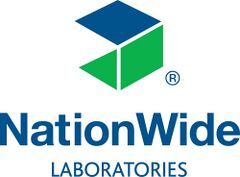Difference between revisions of "Canine reproduction"
Fiorecastro (talk | contribs) (Created page with "== Ovulation detection in the bitch == === Vaginal cytology === Vaginal cytology is used in canine reproduction to determine the optimal timing for mating. The proportion of...") |
|||
| (2 intermediate revisions by the same user not shown) | |||
| Line 1: | Line 1: | ||
| + | [[File:NationWide Logo.jpeg|right|link=https://www.nwlabs.co.uk/|alt=NationWide Logo|240x240px|In Partnership with NationWide Laboratories|frameless|thumb]] | ||
== Ovulation detection in the bitch == | == Ovulation detection in the bitch == | ||
| Line 67: | Line 68: | ||
== Authors & References == | == Authors & References == | ||
[[NationWide Laboratories]] | [[NationWide Laboratories]] | ||
| + | [[Category:LabFacts Book NWL|ABCDEFG]] | ||
Latest revision as of 15:54, 29 April 2022
Ovulation detection in the bitch
Vaginal cytology
Vaginal cytology is used in canine reproduction to determine the optimal timing for mating. The proportion of anucleated superficial epithelial cells (cornified cells) identified on vaginal cytology is at a maximum (often >80-90% of cells) during oestrus although there is considerable individual variation both in the maximum percentage of cornified cells and in timing of the peak in relation to ovulation. Serial sampling is required and mating may be attempted every 2-3 days during cytologic oestrus (>90% cornified cells).
- Using a vaginal speculum if available, direct a saline moistened cotton/viscose swab craniodorsally into the caudal vagina
- Once cranial to the urethral orifice, gently rub the swab against the vaginal wall
- Remove and prepare two smears by gently rolling the swab over two clean glass slides and rapidly air dry
Please visit www.nwlabs.co.uk or see our current price list for more information
Progesterone
A combination of vaginal cytology and measurement of serum progesterone is likely to give the most accurate and efficient determination of the optimum mating period. Serial measurement of serum progesterone from day 7 after the onset of vulval bleeding is recommended. For progesterone concentrations >3nmol/l we will provide an estimated day of ovulation and a range of suitable breeding days. For concentrations 3-16nmol/l the confidence in these estimates will be increased by further sampling. Serum is required for progesterone analysis. Gel tubes are not suitable, serum should be separated within 30 minutes of collection.
Ovarian tissue detection
Oestradiol
In entire bitches and those with ovarian remnants after ovariohysterectomy the oestradiol concentration increases in late anoestrus/pro-oestrus and declines to basal values again by mid to late oestrus. A single oestradiol measurement may be sufficient to detect ovarian tissue in a bitch showing signs of oestrus at the time of sampling.
Please visit www.nwlabs.co.uk or see our current price list for more information
Progesterone
Progesterone concentrations rise prior to ovulation, reach high concentrations by 7 days post ovulation and remain increased for 50-60 days. An increased progesterone concentration in a spayed bitch is consistent with the presence of residual ovarian tissue. A serum sample should be collected either during the period of receptivity or for up to 60 days afterwards. The sample must be separated within 30 minutes of collection.
Please visit www.nwlabs.co.uk or see our current price list for more information
Canine ovarian activity
Stimulation tests are required to detect ovarian remnants when there is a history of suspected oestrus behaviour in a bitch not currently showing appropriate signs, when basal hormone testing has provided equivocal results, or when a bitch’s previous history is unknown. Oestradiol production by the ovarian tissue is stimulated either by the direct action of hCG or by stimulation of endogenous LH/FSH production by administration of a synthetic GnRH analogue. False negative results are possible.
Protocol 1
- Take a basal sample of 2ml blood
- Inject hCG (Chorulon®) 200IU for bitches weighing 9-15kg or 300IU for bitches of 15-20kg. Extrapolate up to a maximum of 500IU for bitches greater than 20kg i/v or i/m
- Take a second sample at 90-120 minutes
- Separate the samples before dispatching to the laboratory
Protocol 2
- Take a basal sample of 2ml blood
- Inject 0.32ug GnRH analogue (Buserelin, Receptal®; Intervet) i/v or i/m. It may be helpful to dilute the drug 1:10 with sterile water and inject 0.8ml. Receptal is not licensed for use in dogs
- Take a second sample at 3 hours
- Separate the samples before dispatching to the laboratory
AMH (Anti-Mullerian hormone)
Reproductive status can be very difficult to determine in animals with an unknown history such as strays or rescue animals. AMH is a useful test to clarify reproductive status in dogs and cats and studies so far have suggested it may be more reliable than performing the GnRH stimulation test where no signs of oestrus are present at the time of sampling.
Further information will become available as studies are completed.
Canine cryptorchidism
Testosterone
If the presence of a whole testicle is suspected then a basal testosterone may provide confirmation.
Please visit www.nwlabs.co.uk or see our current price list for more information
hCG Stimulation test
For investigation of incomplete castration or cryptorchidism it is preferable to perform an hCG stimulation test.
- Take 2ml of clotted blood
- Inject 200-500IU hCG (Chorulon®; Intervet) i/v.
- Take a second sample 30 minutes to 2 hours after hCG administration
- Separate the serum and label the tubes clearly
Testicular neoplasia
Males with a suspected sertoli cell tumour may be screened using a single measurement of serum oestradiol. False negative results are possible.
